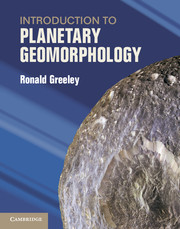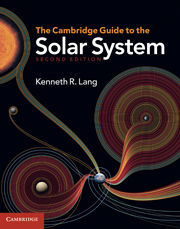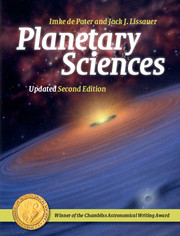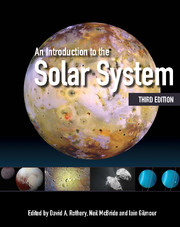Fundamental Planetary Science
Physics, Chemistry and Habitability
$72.99 (C)
- Authors:
- Jack J. Lissauer, NASA Ames Research Center
- Imke de Pater, University of California, Berkeley
- Date Published: August 2019
- availability: Available
- format: Paperback
- isbn: 9781108411981
$
72.99
(C)
Paperback
-
A quantitative introduction to the Solar System and planetary systems science for advanced undergraduate students, this engaging textbook explains the wide variety of physical, chemical and geological processes that govern the motions and properties of planets. The authors provide an overview of our current knowledge and discuss some of the unanswered questions at the forefront of research in planetary science and astrobiology today. This updated edition contains the latest data, new references and planetary images and an extensively rewritten chapter on current research on exoplanets. The text concludes with an introduction to the fundamental properties of living organisms and the relationship that life has to its host planet. With more than 200 exercises to help students learn how to apply the concepts covered, this textbook is ideal for a one-semester or two-quarter course for undergraduate students.
Read more- Offers a detailed discussion of the physical and chemical processes that shape planets and planetary systems
- Provides a broad-based and up-to-date introduction to planetary studies appropriate for advanced undergraduate students
- Includes hundreds of problems to help students learn how to apply the concepts covered
- The authors' previous textbook Planetary Sciences was awarded the Chambliss Prize for Writing from the American Astronomical Society
Customer reviews
Not yet reviewed
Be the first to review
Review was not posted due to profanity
×Product details
- Date Published: August 2019
- format: Paperback
- isbn: 9781108411981
- length: 650 pages
- dimensions: 245 x 188 x 29 mm
- weight: 1.42kg
- contains: 300 b/w illus. 32 colour illus. 200 exercises
- availability: Available
Table of Contents
1. Introduction
2. Dynamics
3. Physics and astrophysics
4. Solar heating and energy transport
5. Planetary atmospheres
6. Surfaces and interiors
7. Sun, solar wind and magnetic fields
8. Giant planets
9. Terrestrial planets and the moon
10. Planetary satellites
11. Meteorites
12. Minor planets and comets
13. Planetary rings
14. Extrasolar planets
15. Planet formation
16. Planets and life
Index.
Sorry, this resource is locked
Please register or sign in to request access. If you are having problems accessing these resources please email [email protected]
Register Sign in» Proceed
You are now leaving the Cambridge University Press website. Your eBook purchase and download will be completed by our partner www.ebooks.com. Please see the permission section of the www.ebooks.com catalogue page for details of the print & copy limits on our eBooks.
Continue ×Are you sure you want to delete your account?
This cannot be undone.
Thank you for your feedback which will help us improve our service.
If you requested a response, we will make sure to get back to you shortly.
×





